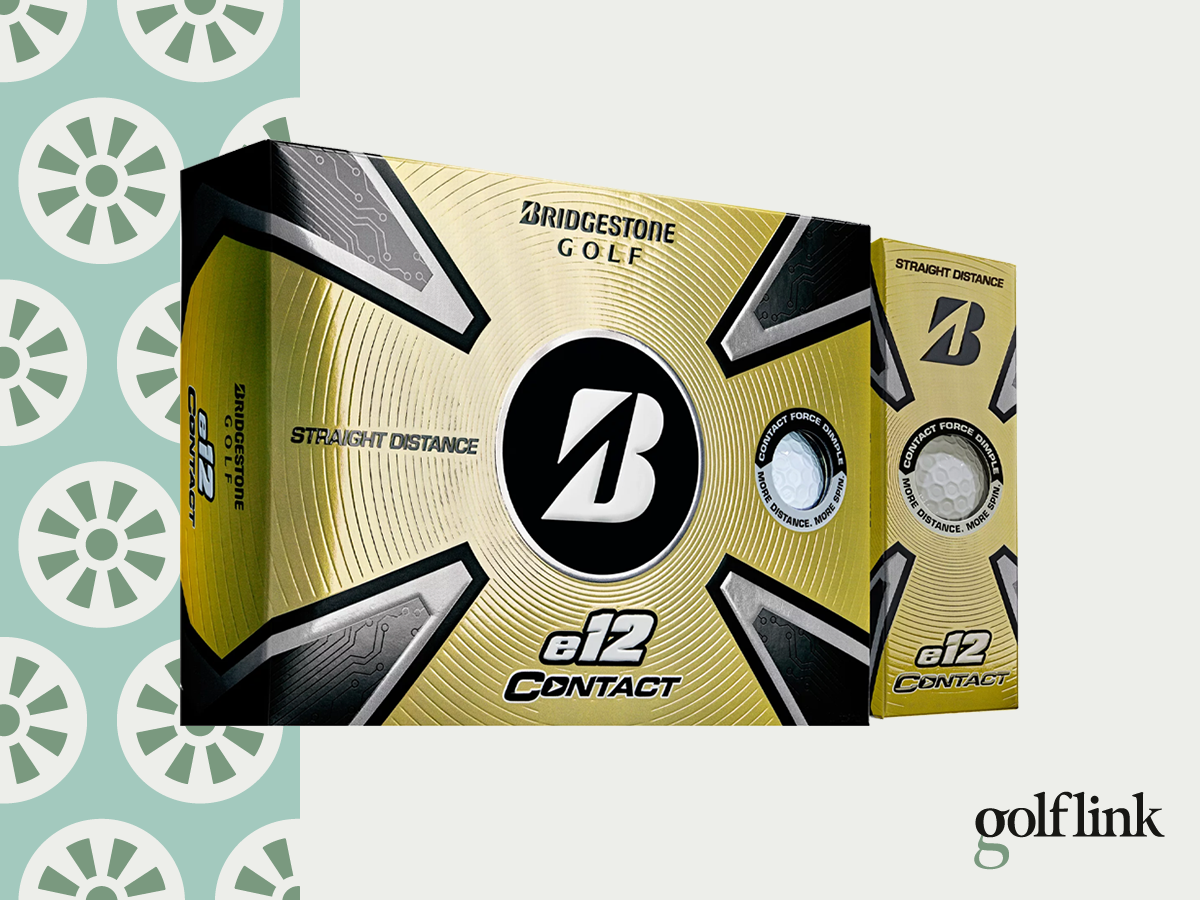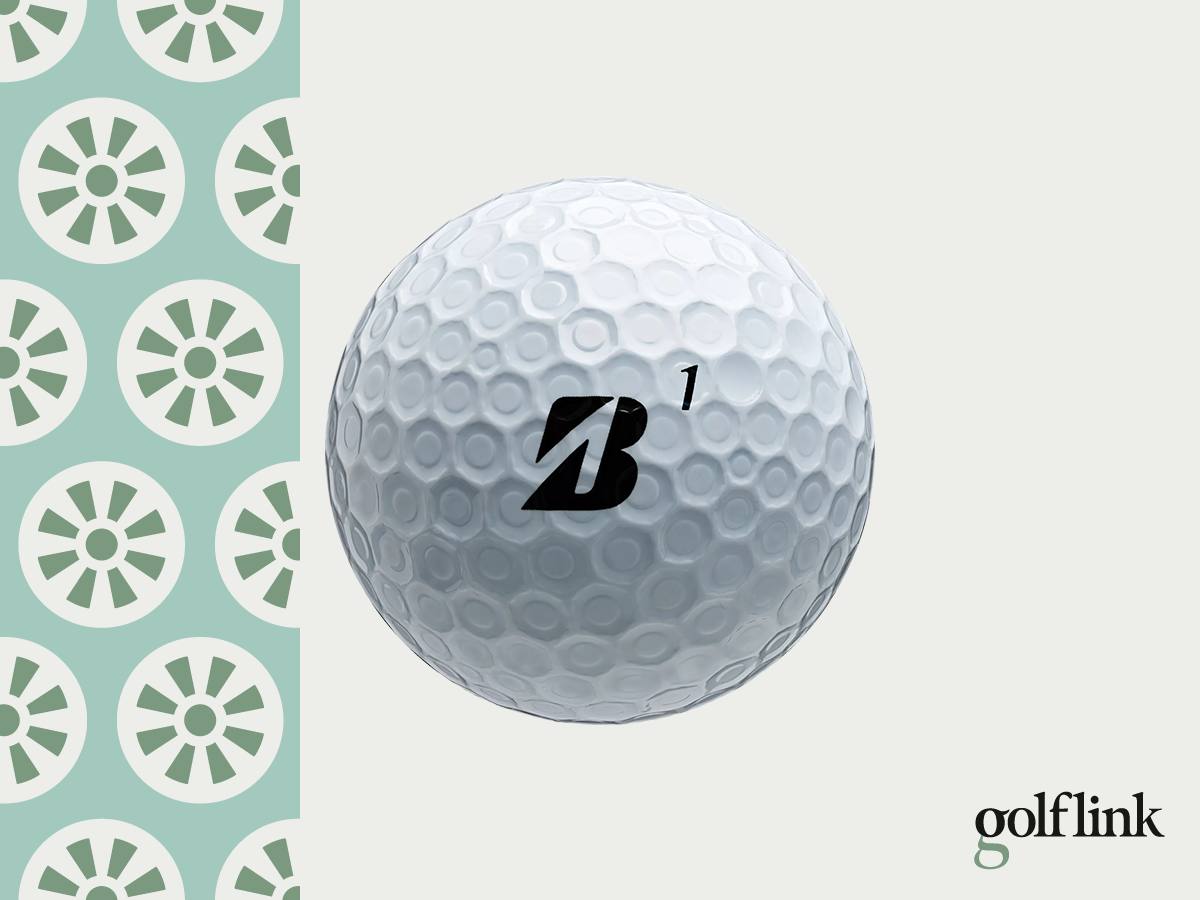Bridgestone e12 Contact Golf Ball Review

You constantly hear about how much the golf ball you plan can impact your performance on the course, and perhaps no golf ball paints as clear of a picture of that as the Bridgestone e12 Contact. We took the Bridgestone e12 Contact to the golf course to show you just how this ball can impact your performance in this complete review.
Bridgestone e12 Contact Review

Check AmazonCheck Golf Galaxy
Cover: Surlyn
Compression: 46
Construction: 3-piece
Not to brag, but I happened to shoot my low score of the year the day I tested the Bridgestone e12 Contact. That’s not so much a brag as it is anecdotal evidence that bogey golfers who have the most strokes to gain by keeping the ball in front of them just might notice a difference by playing the Bridgestone e12.
The standout feature of the Bridgestone e12 is of course those peculiar dimples that Bridgestone points out create more contact at impact and more greenside spin and control. Those hex-shaped dimples have a raised center which provides that extra contact.
While the Contact Force dimples are the e12’s differentiator, the appeal to recreational golfers is that the ball is supposed to produce long, straight shots. So, does it succeed? The answer is yes, but potentially with a trade-off.
From a distance standpoint, the Bridgestone e12 is plenty long. It rewards well-struck drives with satisfying distance. I even elicited a compliment on my distance from a playing partner while playing the e12, and distance is an area of my game where I rarely get compliments.
As for the straight part, this was the most noticeable element that the e12 Contact delivered compared to other balls. This ball has a much stronger hold on its line than a typical ball does. Shots that start straight, stay straight. Shots that start right or left, stay right or left, but minimize those misses by reducing curve. This helped me stay in play a time or two throughout my round, finding my ball a couple yards inside the penalty marker on shots that felt like they’d end up on the wrong side of the stakes.
While this may have been a pleasant surprise for me, better players who want to put some curve on their ball, playing a predictable draw or fade, may be discouraged by playing a ball that resists curse as stubbornly as the Bridgestone e12. Another drawback of the Bridgestone e12 Contact is that it doesn’t hold greens as well as I would like. This test wasn’t my first experience with the e12, and my takeaway from my previous experience was that it rolled off the back of too many greens. While I think faster swing speed players can put enough spin on this ball to hold greens just fine, some players may struggle to get the ball to stop on greens with longer irons.
Bridgestone e12 Contact Pros & Cons
Here are the high-level pros and cons of the Bridgestone e12 Contact that I think will help you decide whether it could be worth testing in your own game.
Pros:
- Satisfying distance
- Flies straighter than most ball, keeping more shots in fairways and in play
- Noticeable results for players searching for more consistency
- Good greenside performance for a non-urethane ball
Cons:
- Not the best at holding greens
- Not ideal for players who want to work the ball
- At its price point, the e12 competes with premium, urethan-covered balls
Who Should Consider Playing the Bridgestone e12 Contact?
After testing the Bridgestone e12 Contact, I’d recommend testing it out in your own game for pretty much any mid-to-high handicap player who feels they could benefit from tighter dispersion patterns and less severe misses around the course, who aren’t set on using a urethane-covered ball.
Bridgestone e12 Contact Tech Talk
What fun would a golf product review be without a bunch of made-up words that are supposed to convince you of how great said product is? Bridgestone's e12 Contact dictionary includes terms like FLEXATIV and Contact Force, and we'll at least try to explain what those are, and how they could impact your game. Here goes.
Let's start with the FLEXATIV cover on the e12 Contact. Bridgestone claims this cover makes the ball to react based on how hard you hit it. For example, when you hit driver, the cover performs like that of a firm ball, creating more ball speed and distance with less sidespin (straighter shots). Meanwhile, when you hit it with a higher-lofted club, it spins more, yielding more control.
Meanwhile, Bridgestone has given those unique dimples with the raised centers the Contact Force moniker. It's those dimples that create the extra contact that gives the e12 Contact its name. More contact, according to Bridgestone, means more efficient transfer of energy.
In addition to white, the e12 Contact is available in matte green, matte red, and matte yellow.
The Difference a Dimple Makes
Whether or not your game jives with the Bridgestone e12 Contact, if you’re a mid-to-high handicap player who wants to hit the ball straighter, it could be worth giving the e12 Contact a try. Maybe those unique dimples will help you post your low round of the year.